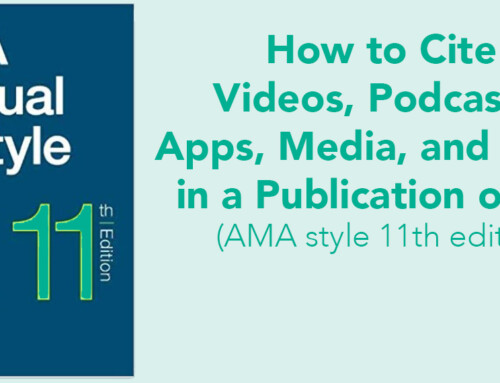 Are you confused about competency-based medical education (CBME)? Look no further! The Faculty Incubator conducted 2 Google Hangouts with 4 experts on the subject: Dr. Stanley Hamstra, the ACGME Vice-President of Milestones Research and Evaluation, and Drs. Teresa Chan, Robert Cooney, and Jonathan Sherbino. We summarized some of the key points from this robust discussion, which is available to you both in podcast and video formats. Enjoy!
Are you confused about competency-based medical education (CBME)? Look no further! The Faculty Incubator conducted 2 Google Hangouts with 4 experts on the subject: Dr. Stanley Hamstra, the ACGME Vice-President of Milestones Research and Evaluation, and Drs. Teresa Chan, Robert Cooney, and Jonathan Sherbino. We summarized some of the key points from this robust discussion, which is available to you both in podcast and video formats. Enjoy!
ACGME’s Dr. Stan Hamstra and Competency-Based Medical Education
Panel Discussion: Competency-Based Medical Education
What is competency-based medical education (CBME)?
CBME defines specific behavior-linked competencies that must be met during training in order for a resident to be deemed ready for unsupervised practice. The aim is to help answer the question “How do we know a trainee is competent enough to enter unsupervised practice?”
Defines the knowledge, skills, and attitudes necessary for unsupervised practice.
CBME requires a holistic vision of what a competent physician looks like, then works backwards to define the specific competencies and sub-competencies that must be achieved to be deemed competent. This depends on assessment tools that allow us to link specific behaviors with a specific competency. This method of medical education presupposes a degree of understanding of the stepping stones to competency.
Defines a progression through action-based stages rather than the current time-based system.
Residents are allotted a set amount of time for training. However, educators should be less tied to calendars to allow more fluidity as learners move through competency stages and gain skills at various rates. Ideally, learners who advance through the competencies more quickly will progress through residency training at a faster pace.
CBME allows for tailored learning.
CBME necessitates increased exposure to those areas where a resident is struggling in order to ensure learners maintain their expected progression through the sub-competencies. This can pose as a logistical challenge for programs because learners will progress at different rates.
Requires a dedicated program of assessment to assess the trainee in the clinical environment.
Programs need to establish multiple ways to sample, in an authentic way, what the resident can do independently in the clinical environment. This requires numerous data points and cannot be a single yearly assessment. Numerous data points allow faculty to adequately assess if a learner is on target, advanced, or lagging in regards to a certain competency. This enables instruction to be individualized to the specific learner in order to improve their deficiencies.
Why do we need CBME?
Healthcare delivery has changed.
There are fewer opportunities for faculty-resident interaction, and we have moved away from the former apprenticeship model. Part of this is due to an increased awareness of financial considerations and resultant changes centered on productivity and quality.
Patient outcomes are a primary driver.
CBME helps us meet the demands of the public, patient, learners, and educators by focusing on individual performance that is assessed using valid tools and documentation. Data subsequently must be provided regularly to trainees so that they can learn where they need improvement.
How do milestones fit into the CBME?
Milestones provide a system of assessment for CBME.
Milestones serve as frequent, repetitive assessments that mark a learner’s progression through the (sub-)competencies. A learner’s milestone data can be compared to current and previous cohorts, allowing the clinical competency committee (CCC) to decide if the learners is on track, advanced, or in need of further development.
Programs and specialties can use milestones to identify opportunities for improvement.
Milestone data can support programmatic changes. If a program identifies that a majority of their learners are falling short in a specific sub-competency or milestone, they may leverage this data to augment their training experience (e.g. add a rotation or learning environment). Accordingly, if a specialty identifies that learners across many programs are falling short in the milestones in one sub-competency, it may be worth evaluating if that skill is necessary in the training of competent physicians in that specialty.
Practical points for the clinical teacher
Transition to a CBME system is a complex process.
Do not try to reinvent the wheel! Utilize available best practices, and provide faculty development to ensure the smoothest transition for learners and educators. Similarly, start small and choose a few competencies that the program can implement. Be sure to incorporate an iterative approach: try things in your environment, make small changes, and continue to refine process.
Be critical of your assessment tools.
Does the data match your experience with a specific learner? If not, identify strategies to improve the tools to better capture your learners’ behaviors.
Future steps in the integration of CBME
Time will remain a challenge to the full implementation of a CBME system.
Funding sources are not going to provide learners unlimited time, so while you still have the same total number of years, you advance or hold steady in a given area based on CBME. Once a learner gains certain skills and demonstrates competency, they will be given more advanced tasks. If a learner fails to demonstrate competency in a particular skill, they will be given opportunities to further their learning.
Interpretive guide will be provided to program directors.
Currently, educators at the national level are evaluating milestone datal. In the future, program directors will get information on their specific programs to aid in program evaluation. Because milestones cross rotations, elective times may need to be repossessed and dedicated to obtaining certain competencies.






